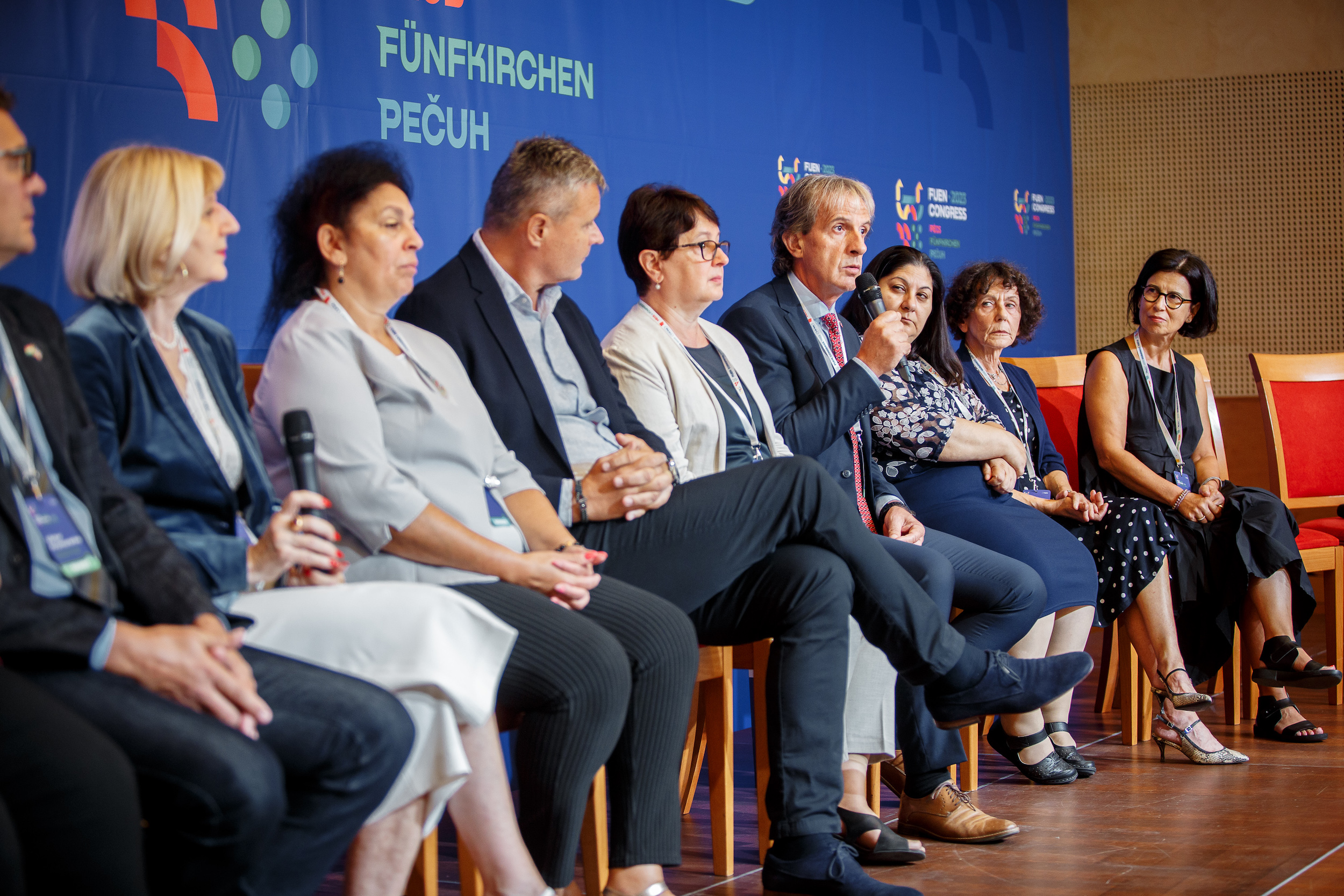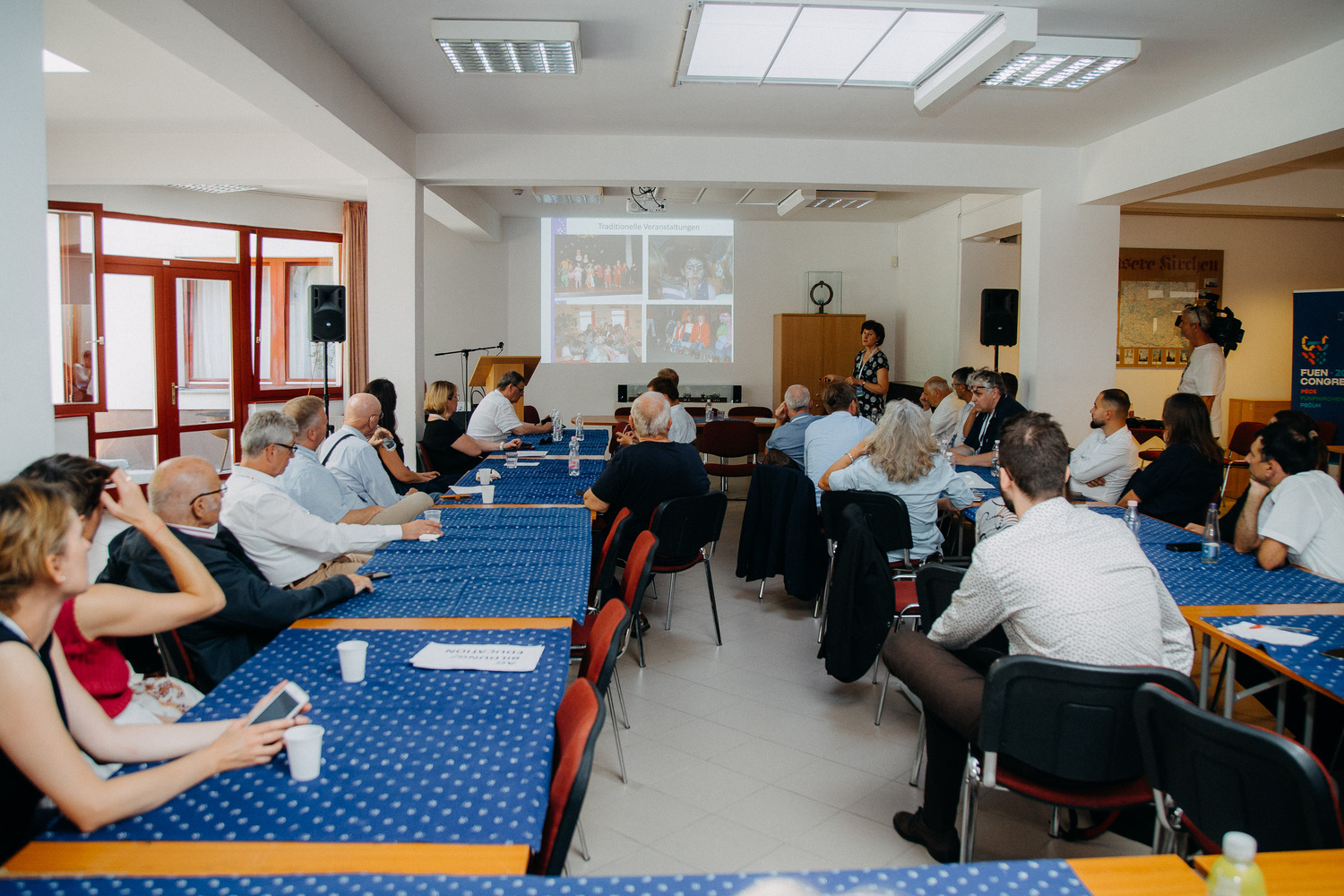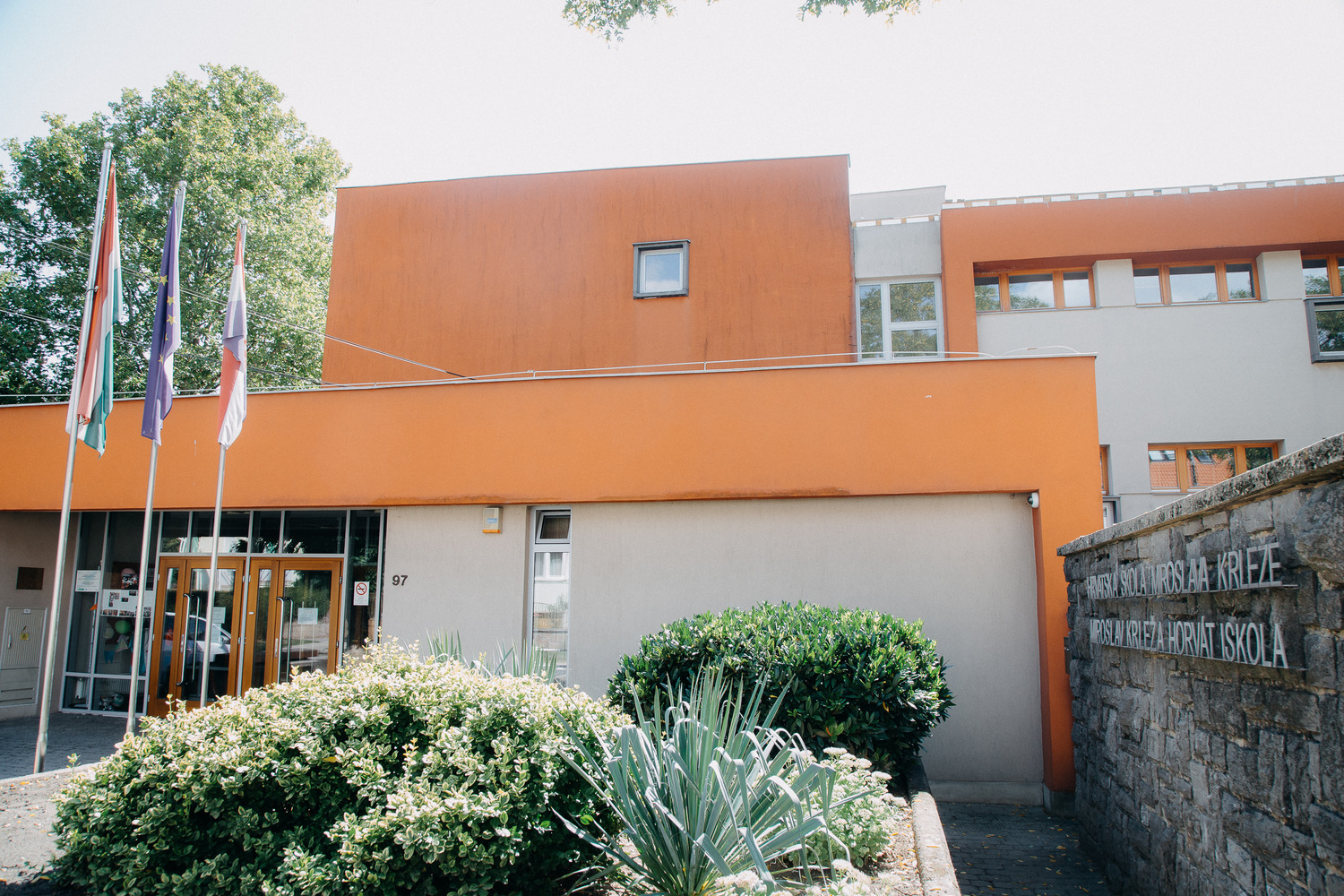
Maintaining cultural diversity: theory and practice
09.09.2023Day two of the 67th FUEN Congress in Pécs Fünfkirchen Pecuh was all about cultural diversity and the efforts needed to maintain it. There are 13 officially recognised nationalities in Hungary, and the day started with the presentation of 11 of their self-governments – the Germans, Croats, Slovaks, Romanians, Roma, Bulgarians, Rusins, Slovenes, Poles, Serbs, Greeks, Ukrainians and Armenians.
After the greetings of László Őri, Chairman of the Self-Government of Branau/Baranya County, who said that the county has set an example for Europe on the coexistence of nationalities, the leaders of the self-governments got into the details of minority life in Hungary. The country’s Law on Nationalities offers cultural autonomy to all recognized autochthonous minorities. They have a structure of local self-governments and can establish and organise their own cultural and educational institutions and get state support to operate them. Regarding political representations, each minority has a speaker in the Hungarian Parliament and have their own Nationalities Committee.
This does not mean that there are no problems and challenges the nationalities of Hungary have to face. As one of the participants of the debate put it, there is a contradictory process: fewer people speak minority languages, but more are assuming their cultural ties. The results of the 2011 census show a steady increase of one third regarding the number of citizens declaring themselves as minorities, but the same results show that many of them do not consider the minority language their mother tongue. Language loss and assimilation are a clear and present danger for these communities, but they try to make the best of the opportunities they have, as they put it. In fact, the number of pupils attending minority educational institutions is increasing.
Another problem is migration – both to other countries but also within the country, as the minority institutions are able to provide many of their services in a geographically restricted area, so people moving to the capital city for example cannot benefit from them. The much-expected results of the 2022 census will give everybody a clearer picture on the number and state of the 13 nationalities living in Hungary.

The excursions following the debate took the participants from theory to practice at various minority educational institutions in Hungary, where they had the opportunity to talk to the school management, teachers and students.
-Valeria Koch School Centre for the German Minority
FUEN’s Working Group of German Minorities (AGDM) visited the bilingual school operated by the Self-government of Germans in Hungary, which pays equal attention to the language, culture and identity of Germans and currently has 914 pupils in primary and secondary education. It also works as a boarding school for 107 youngsters and is the operator of two kindergartens located in the city. There are five German classes and one special class on the German minority each week, while at least half of all classes is in German language. The school also organizes many minority projects and involves parents and grandparents in many of its activities. The school recently inaugurated a learning path presenting the history of the minority and is also the organizer of the very popular Schwabenball, which manages to bring together 2000 people. School facilities were shown to the visiting group, they attended a short cultural programme and visited a dance class and the learning path.
The German Pedagogical and Methodical Centre in Hungary was part of the Valeria Koch School Centre until 2021, and then became an independent institution, which hosted FUEN’s Working Group on Education. Members of the working group got detailed information on the activities and programmes the pedagogical centre runs.

- Miroslav Krleža School Centre of the Croatian Minority
FUEN’s Working Group of Slavic Minorities (AGSM) visited the Croatian school founded in 1952-1953. It is a state-funded school that offers curriculum in two languages, Hungarian and Croatian. All teachers of the institute are bilingual. Pupils that attend the school originate from different minority groups as well as the majority, and at the moment of graduation, they master both languages fluently.

- Gandhi Grammar School of the Roma Minority
A grammar school for Roma? Members of the Non-Kin-State Working Group were very interested in visiting this educational institution, as most of them did not know of any other example in Europe. Around 200 pupils, not only but mainly of Roma origin, attend this truly exceptional school, which is also a boarding school, as the pupils come from all over Hungary. "Our aim is to keep young people in the education system longer than would otherwise be the case, and to make them strong for a life in which they unfortunately face discrimination by giving them a strong sense of identity," explained the headmaster.


Further information (HUN): http://gandhigimi.hu
Пресс релизы
- FUEN wishes you a peaceful Christmas season, restful days and a bright, hopeful start to the new year!
- FUEN calls on the EU to act over systematic ethnic-based land confiscations in Slovakia
- Women of Minorities conference in Budapest calls for structural change to ensure equal political participation of minority women
- FUEN President Olivia Schubert at UN Forum on Minority Issues in Geneva
- "Laboratory of Peace": 28th Seminar of Slavic Minorities held in European Capital of Culture Gorica/Gorizia
- Equality in Political Participation and Representation: Third “Women of Minorities” Conference to Be Held in Budapest
- FUEN Working Group on Education discusses challenges and future of minority schooling in Europe
- 28th Seminar of Slavic Minorities in Europe to take place in Gorica/Gorizia, Italy
- Olivia Schubert in her first interview as FUEN President
- FUEN Assembly of Delegates elects new leadership – Olivia Schubert becomes new President














